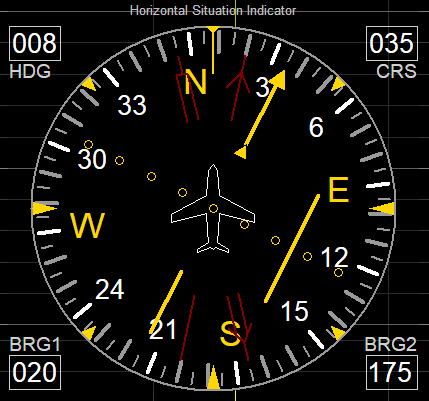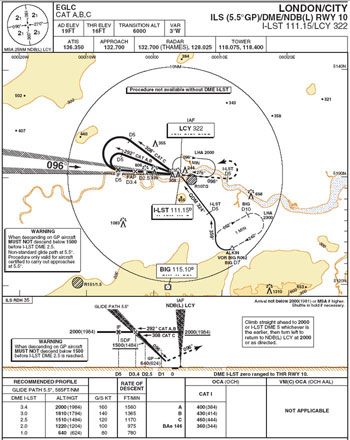

Glideslope frequencies range between 329.3 and 335 MHz (UHF).Įach one of the 40 available localizer frequencies has an associated glideslope frequency. Its angle varies with terrain requirements at the specific runway but is typically 3 degrees. The glideslope provides vertical course guidance.

The aircraft's navigation equipment interprets these two signals' ratio and deflects the CDI needle accordingly. Both emissions are at equal amplitude on the localizer's centerline. The aircraft receives the 90 Hz signal more intensely when it is on the center's left side and the 150 Hz more strongly when on the right side. In a narrow pattern, these signals are emitted to each side, left and right, of the localizer centerline.

It uses Amplitude Modulation (AM), like in your old car radio, to modulate two signals on the single VHF frequency - one at 90 Hz and the other at 150 Hz. The localizer antenna array is located at the departure end of the runway.
#Localizer vs vor frequencies code#
Modern avionics, such as the Garmin 1000, can automatically decode the morse code and display it to you, eliminating the need to listen and decipher it yourself. Identifying the station is done by listening to the Morse code over the navigation radio. Before trusting the localizer for navigation, you must identify that the correct station is in use. The localizer transmits a Morse-code ID that typically starts with an "I," followed by a three-letter code. It covers 35º to each side of the centerline up to 10 NM and 10º up to 18 NM from the antenna. The coverage area goes up to an altitude of 4,500'. Outside the full-width deflection range, the aircraft receiver should still sense the localizer signal within a given coverage range.
#Localizer vs vor frequencies full#
Typically, this is a 5° total width (or 2.5º full deflection to each side), four times more sensitive than a VOR. The specific angle chosen puts the course width at the runway threshold at about 700'. Localizer course widths range between 3º and 6º. Therefore, localizers use only odd tenths decimals (e.g., 108.1, 110.7 MHz) while VOR stations in this range use even tenths (e.g., 108.0, 110.0 MHz). You should note that the VOR frequency range is broader (108.0 to 117.95 MHz) and overlaps this range. Localizers operate on VHF frequencies between 108.1 and 111.95 MHz. To avoid this problem with an HSI and have better situational awareness regardless of the dial type, always set the OBS to the inbound course. In contrast, HSI-type displays, which eliminate reverse sensing with VOR stations, do not eliminate it with a localizer. Since the OBS selection doesn't move the needle, a regular VOR display is not affected by reverse sensing when using a localizer. This phenomenon may cause disorientation and lead the pilot to navigate away from the course instead of toward it.įor localizer navigation, a simple, old-style VOR display has an advantage over an HSI when it comes to reverse sensing. With reverse sensing, the needle veers to the wrong side. Typically, we want the CDI to deflect to the side of the desired track. However, it is still a good idea to set the OBS to the inbound course of the published approach for better situational awareness. Unlike in VOR navigation, turning the OBS knob when a localizer is in-use does not affect the CDI displacement. Unlike VORs, which facilitate navigation on any bearing around them (from 0º to 359º), localizers only support a single, specific direction. In both, the pilot stays on the desired track by keeping the CDI (Course Deviation Indicator) centered. Navigation with localizers and VORs is very similar. VORs and localizers share the same navigation radio and display equipment in the flight deck. It can serve as part of an ILS approach or in a stand-alone localizer-only procedure. The primary component of the ILS is the localizer, which provides lateral course guidance. ILS relies on multiple ground-based and aircraft equipment that provides: It is still, by far, the most commonly used precision instrument approach procedure. The ILS is one of the oldest yet most widely used instrument approach procedures still in service. You may already know that Instrument approaches are IFR procedures designed to guide the aircraft from the en-route part of the flight to a position from which it can make a safe landing.Ī precision approach provides lateral (left and right) and vertical (up and down) course guidance on the final approach leg. An Instrument Landing System ( ILS) enables pilots to shoot precision instrument approaches to a runway.īefore digging into the nuts and bolts of ILS, let's review what an instrument approach, and more specifically, a precision-instrument approach is.


 0 kommentar(er)
0 kommentar(er)
